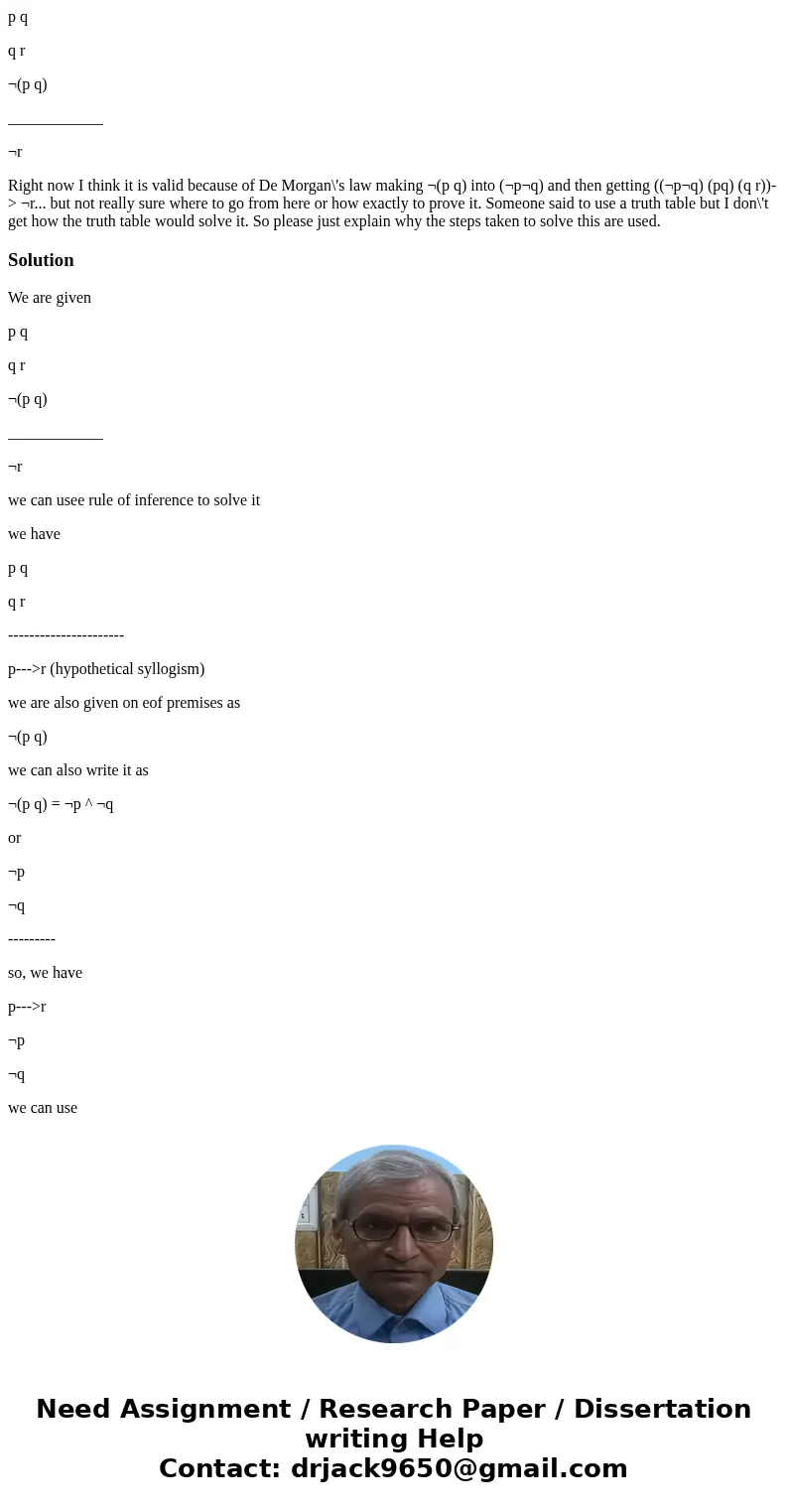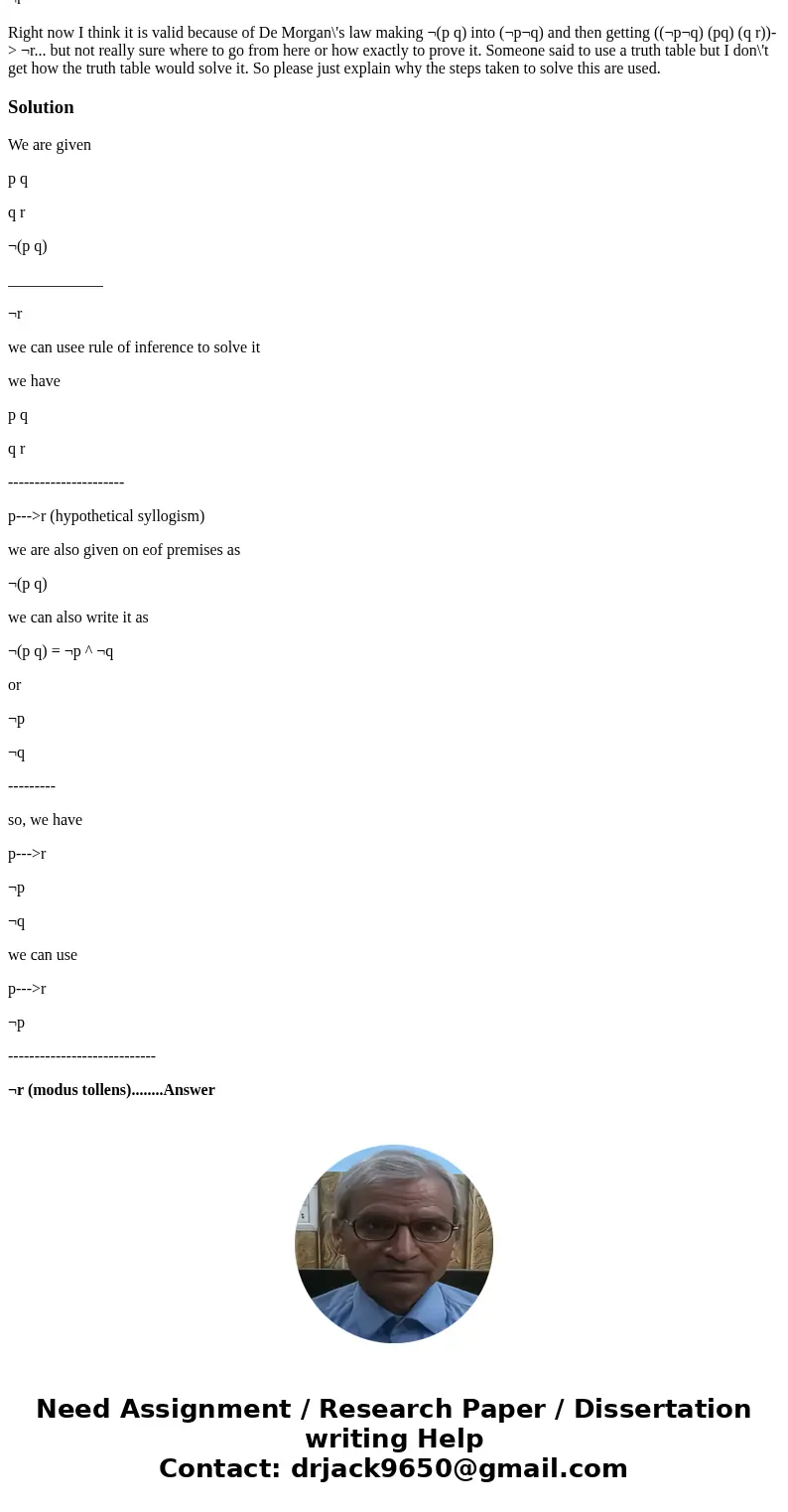p q q r p q r Right now I think it is valid because of De M
p q
q r
¬(p q)
____________
¬r
Right now I think it is valid because of De Morgan\'s law making ¬(p q) into (¬p¬q) and then getting ((¬p¬q) (pq) (q r))-> ¬r... but not really sure where to go from here or how exactly to prove it. Someone said to use a truth table but I don\'t get how the truth table would solve it. So please just explain why the steps taken to solve this are used.
Solution
We are given
p q
q r
¬(p q)
____________
¬r
we can usee rule of inference to solve it
we have
p q
q r
----------------------
p--->r (hypothetical syllogism)
we are also given on eof premises as
¬(p q)
we can also write it as
¬(p q) = ¬p ^ ¬q
or
¬p
¬q
---------
so, we have
p--->r
¬p
¬q
we can use
p--->r
¬p
----------------------------
¬r (modus tollens)........Answer


 Homework Sourse
Homework Sourse